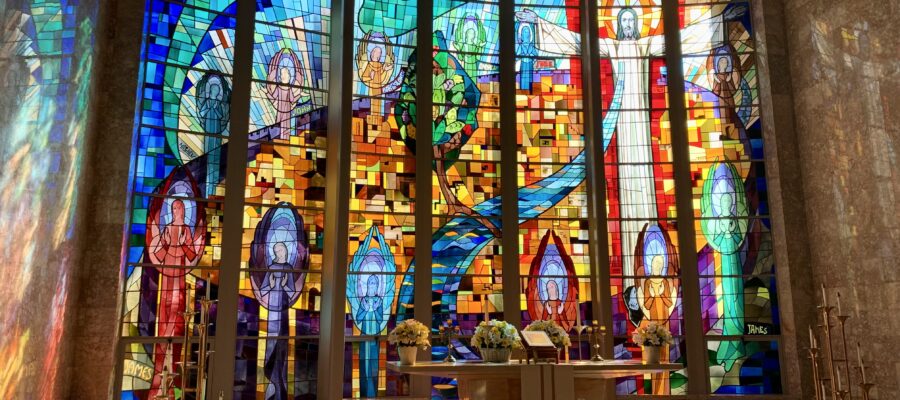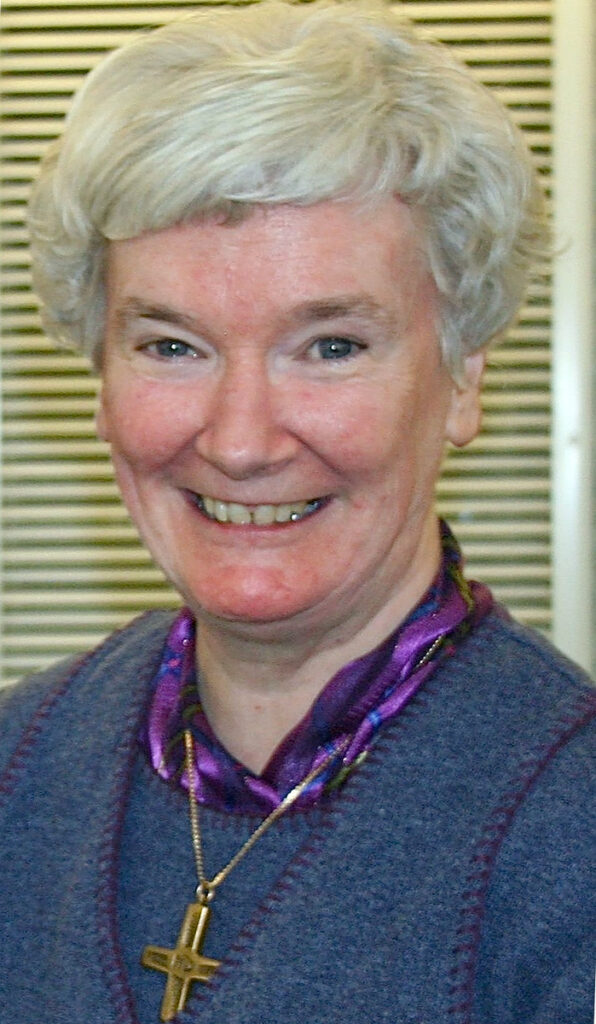
Glimpses of God's Goodness are published for all Sundays and Feast Days at www.sndden.org, the international website of the Sisters of Notre Dame de Namur.
March 31, 2024
John 20: 1-9
ALLELUIAS RING OUT THROUGHOUT CHRISTENDOM THESE NEXT WEEKS AS CHRISTIANS AROUND THE WORLD REJOICE THAT JESUS, THE CENTRAL FIGURE OF OUR BELIEFS, HAS CONQUERED DEATH.
Most Christians have formed a picture of the Resurrection in their minds, perhaps framed by artists through the years. These pictures usually depict someone who comes out of the tomb whole and entire with no apparent physical disabilities except a few puncture wounds.
No one ever documented the moment that Jesus emerged from his tomb. The Gospel accounts were all written many years later by people who were his contemporaries or by people who actually spoke with his contemporaries. We believe that Jesus was a real person which is documented in secular history as well as in Christian theology. We also know that he was tortured prior to his crucifixion by the Romans. The Romans had no particular quarrel with him. The Jewish religious hierarchyconsidered Jesus a nuisance and were afraid that he had become a bit of a celebrity preaching on behalf of people who were voiceless, not always following strict observance of the law and yet drawing large crowds. It was a small group of Jewish authorities who spoke with Pilate about eliminating Jesus. It was not the Jewish people who had been following him and listening to his preaching. “The Jews” were not the culprits in his death; the Jewish authorities were.
If we truly believe Jesus was a real human being, we must acknowledge that he was brutally tortured prior to being nailed to and hung on the cross as a common criminal. The women who remained faithful to Jesus are mentioned in the Gospels, but it is also possible and probable that their husbands were also present, unnoticed as visitors in the crowds assembled in Jerusalem for Passover. These people would have been Jesus’ friends from Galilee who traveled with him, looking after his small contingent as they moved among the people. If so, these men would have been the ones who assisted Jesus and his broken body when he emerged from the tomb. They and their wives would have cared for his wounds and made sure that he was able to reach out to the people who had remained loyal to him. Jesus was a people person; he never worked alone.
Easter provides an opportunity for personal soul-searching after the desert experience of Lent. Would I have remained faithful to Jesus after his crucifixion? Would I have dismissed him as a deviant preacher not in line with established religious customs? Would I have been afraid of what others would say if I realigned my ways of acting to encompass all people who had major vulnerabilities? How do these questions resonate right now in my own life?
Easter is an opportunity for all Christians to renew their faith in a man who conquered death, who spoke out against abuse in any form, who championed women and people who were most rejected and who remained a faithful Jew relying on Yahweh as a higher power. As his followers, we are called to continue his outreach, to preach the Good News that all people have dignity and a right to exist. Does Jesus’ mission live on in me? That is the legacy of Easter!
John 20: 1-9
On the first day of the week, Mary of Magdala came to the tomb early in the morning, while it was still dark, and saw the stone removed from the tomb. So she ran and went to Simon Peter and to the other disciple whom Jesus loved, and told them, “They have taken the Lord from the tomb, and we don’t know where they put him.” So Peter and the other disciple went out and came to the tomb. They both ran, but the other disciple ran faster than Peter and arrived at the tomb first; he bent down and saw the burial cloths there, but did not go in. When Simon Peter arrived after him, he went into the tomb and saw the burial cloths there, and the cloth that had covered his head, not with the burial cloths but rolled up in a separate place. Then the other disciple also went in, the one who had arrived at the tomb first, and he saw and believed. For they did not yet understand the Scripture that he had to rise from the dead.
The Gospel of the Lord

Meet Sister Maria Delaney, SNDdeN
Sister Maria Delaney has been a Sister of Notre Dame de Namur for 60 years. Her professional background includes secondary teaching and administration and ten years as the founding Executive Director of the Notre Dame Education Center in Boston. For twelve years, she was based in Rome Italy as a member of the Notre Dame de Namur Congregational Leadership Team. In this capacity, she had the privilege of visiting the sisters on five continents. She has also spent several years on the Board of Directors of the International Catholic Education Association which gave her the opportunity to visit many Catholic schools around the world.
